Five Days in the DPRK – An Account of a Journey to the Edge of the World / Part 2
The morning views from the window of my 38-storey hotel room are spectacular. A calm city shrouded in low lying patches of mist expands before me. Uncontestedly dominating the skyline is the unfinished, 105-storey Ryugyong hotel, a vast grey
pyramid that stands as a water-stained, unclad shell, stabbing the sky in the distance. It’s topped by several round platforms that were meant to be turned into five revolving restaurants, and a rusty construction crane. It’s an
architectural monstrosity of titanic proportions, window-less and derelict, testimony to the folly of the nation’s often do-or-die one-upmanship. Construction had started in 1987, but when the money ran out a few years later the project
was abandoned.
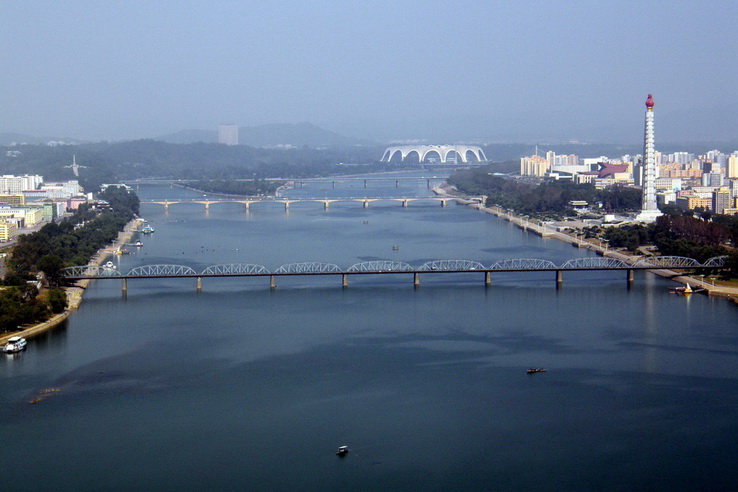
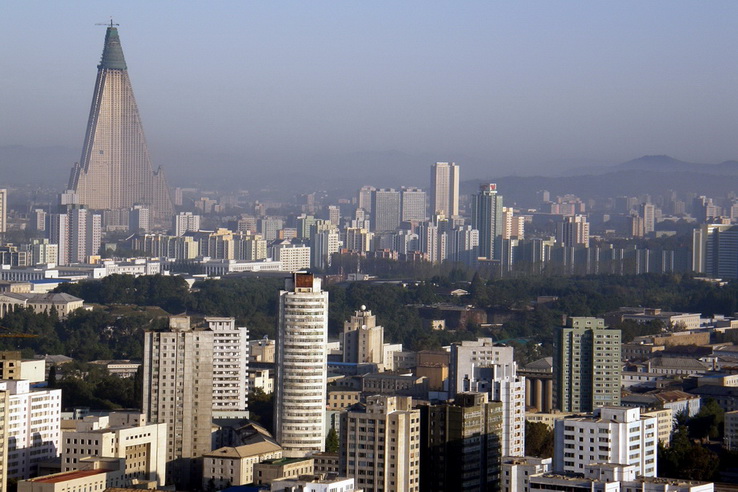
Driving through the city in the early morning hours Pyongyang presents itself in an animated calmness. The few buses and streetcars that ply the streets are packed to the gunnels with people. We pass several sentry posts manned by soldiers, most strategically
located at bridges and large intersections. A few uniform-clad women stride past carrying heavy assault rifles with shiny bayonets attached. In some places small and tipsy corner shops made of metal framework and canvas covers dot the streets,
their merchandise limited to a few items sitting on rickety shelves.
Whenever the bus slows down or comes to a complete standstill people glance curiously at the long-nosed visitors from foreign lands that peer at them through the windows. I smile and wave, and note few return the gestures in kind.
There are notably few traffic lights to control the flow of vehicles anywhere in the city. Instead, shapely young ladies are positioned in the center of intersections that have been chosen and trained to act as traffic wardens. We are explained
they are actual police officers with the authority to arrest people on the spot if need be. It is amazing to watch them twirl in rigidly precise motions during their series of two hour long shifts. Nobody is allowed to take photos from the bus
while driving through the city so I have to wait for a later opportunity to discreetly snap away.
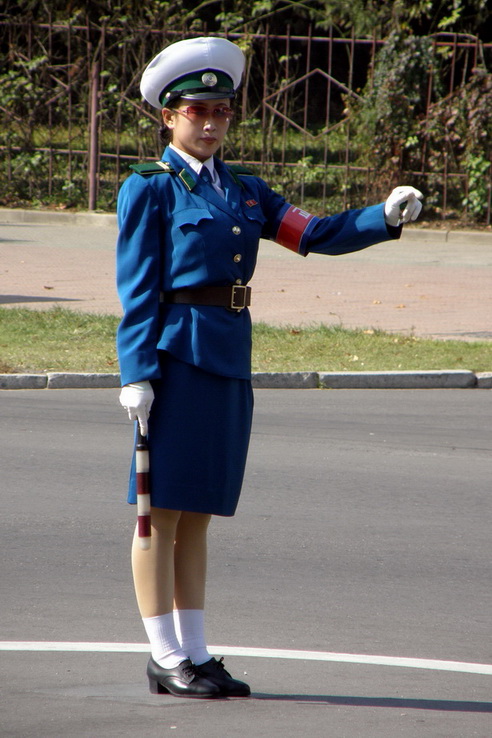
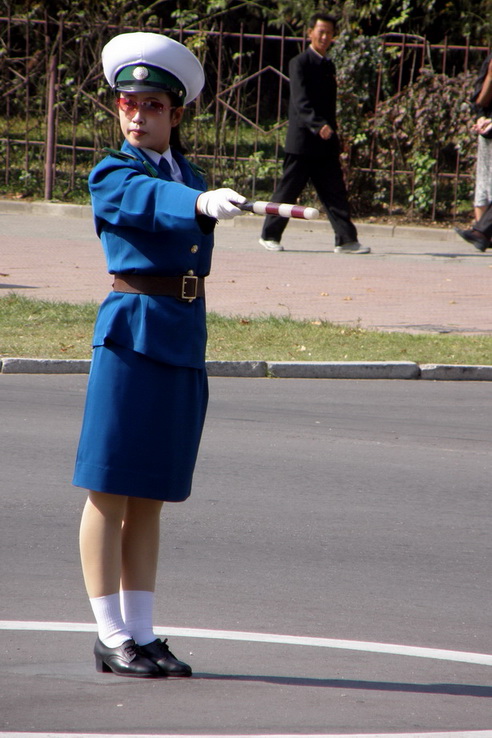
On the way to our first sightseeing highlight of the day we also pass what’s considered the heart of Pyongyang, oceanic Kim Il Sung Square, a huge open plaza of 75,000 sqm of granite, flanked on its four sides by the Grand People's Study Hall
to the north, the National Gallery to the east, the Korean Central History Museum to the west and the Taedong river to the south. This is through where the great military and torch parades and mass rallies pass that are regularly staged on certain
commemorative holidays throughout the year.
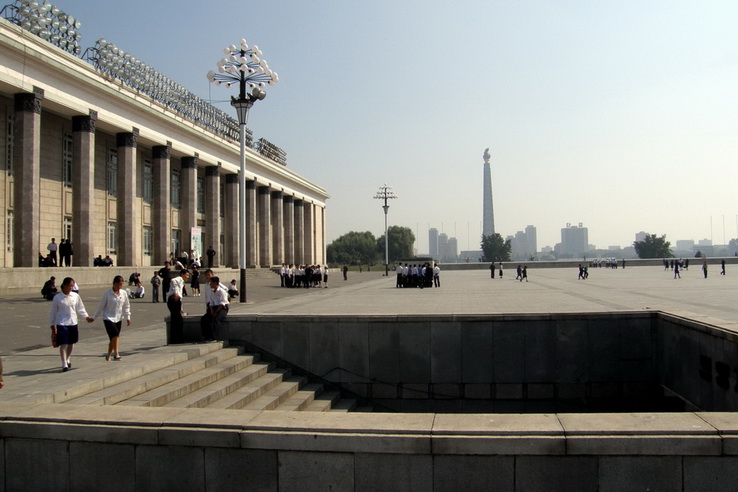
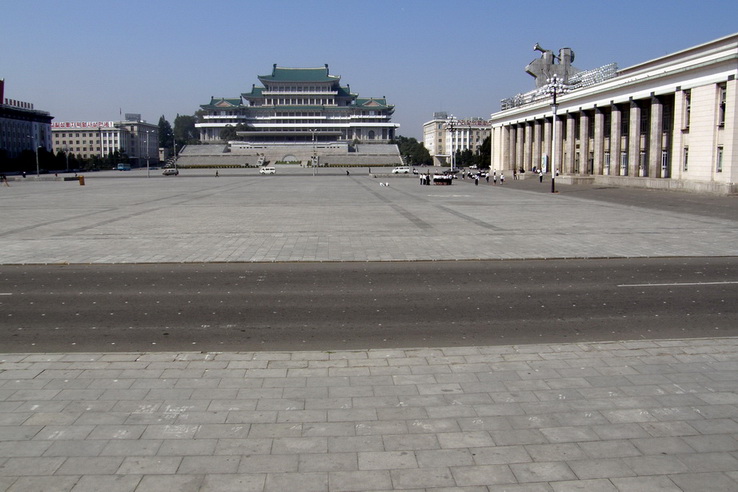
—
We visit Pyongyang’s subway which, at roughly 200 meters below the surface being the deepest in the world, doubles as a nuclear fallout shelter for the city’s citizens. In its presentation with its marble-clad tunnels, pillars,
vaults, and large frescos it resembles Moscow’s equally stunning underground cathedrals to socialism. Just like when boarding the Air Koryo flight the previous day solemn ceremonial music wafts through the halls.
Seemingly endless elevators bore down to the platforms of the stations of its two lines that are not always named by location but good revolutionary terminology. Some favorites are “Red Star”, “Comrade”, “Glory”,
and even “Torture”. The massive chandeliers hanging from the vast ceilings are themed by station name.
Trains are steadily running, and there’s a constant in- and outflow of passengers. I take this welcome opportunity to directly interact with the locals and start showing off the little magic routine I studied and rehearsed for hours
before starting my journey. Within seconds all eyes of an entire school class that has lined up on the platform in orderly rows of two are on me. It’s great fun to observe the bewildered look on their faces as I stuff a bright red piece
of silk cloth into my left fist from where it then suddenly vanishes into thin air. They gesture to me to perform it again and again, and when the train finally pulls into the station and everyone gets on board I receive a salvo of applause from
all around, including the originally sceptical looking teachers.
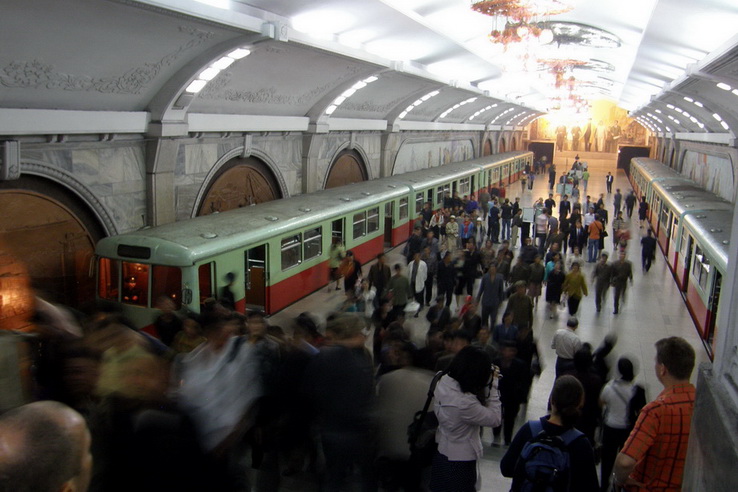
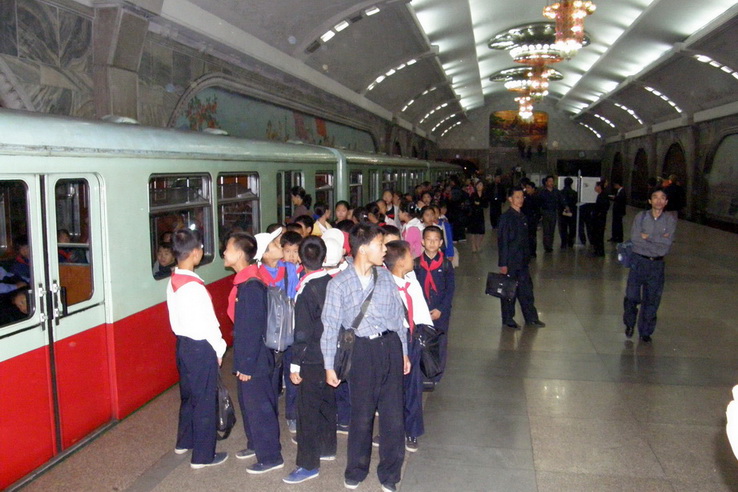
—
All foreign visitors to Pyongyang make the pilgrimage to what probably is the city’s most symbolic and famous site, the Grand Monument on Mansu Hill. This is where they are asked to pay at least perfunctory homage to the towering,
overbearing bronze statue of the people’s “Great Leader” and father of the nation Kim Il Sung by standing quietly in front of it and bowing. It is also obligatory to present flowers to the site.
Standing twenty meters tall on a three meter high pedestal atop a massive plaza his arm reaches out pointing the way forward, flanked by two mammoth stone monuments lined with 228 bronze figures symbolising the socialist revolution and the
anti-Imperialist struggle. Again, solemn music plays from speakers at all times. Upon closer inspection it becomes evident that some of the statues are actually treading on US army helmets as well as the American flag. Slogans on the monuments’
placards read “Long Live Kim Il Sung” and “Let us drive out US imperialism and reunify the country”.
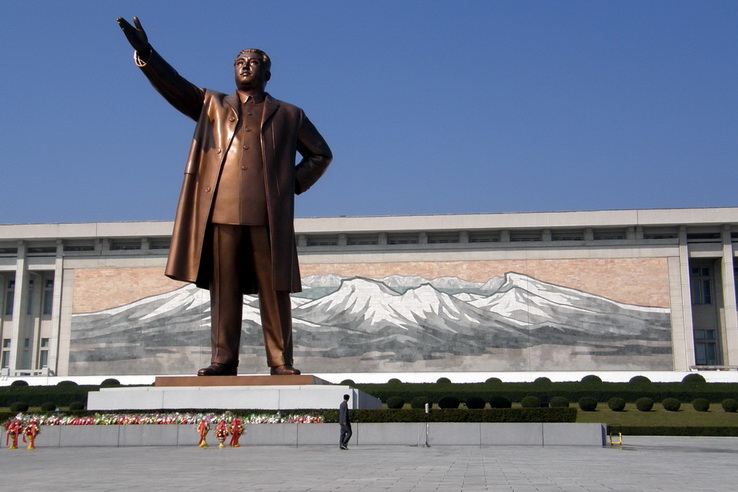
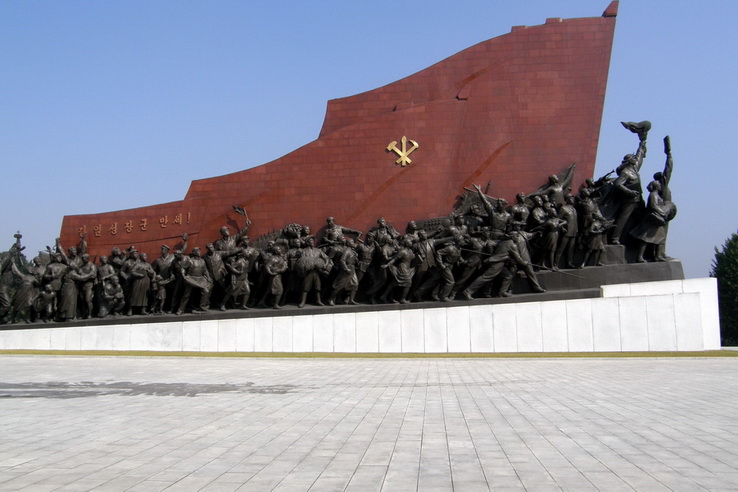
We are allowed to snap away with discretion on the strict condition never to crop any features of this sacred-held statue, but only to photograph it as a whole.
While we are on site not insignificant numbers of ceremonially dressed Koreans visit as well, paying respect to the statue, presenting flowers, and having pictures taken in front of it. Some of them are visibly moved by the experience. Eventually
even a small wedding party shows up, the bride dressed in a stunningly colorful traditional robe, the groom who sits in a wheelchair in a classic black suit. We are told that the Korean government has started an initiative to entice beautiful
patriotic women of high integrity into marrying disabled veterans of the KPA, the Koreans People’s Army.
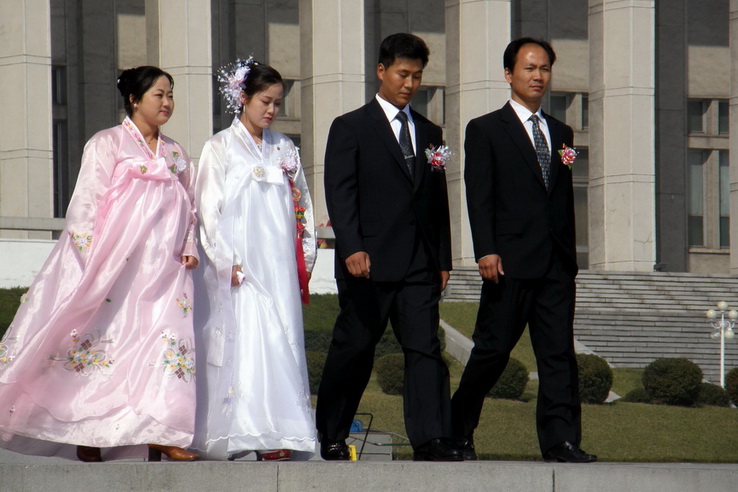
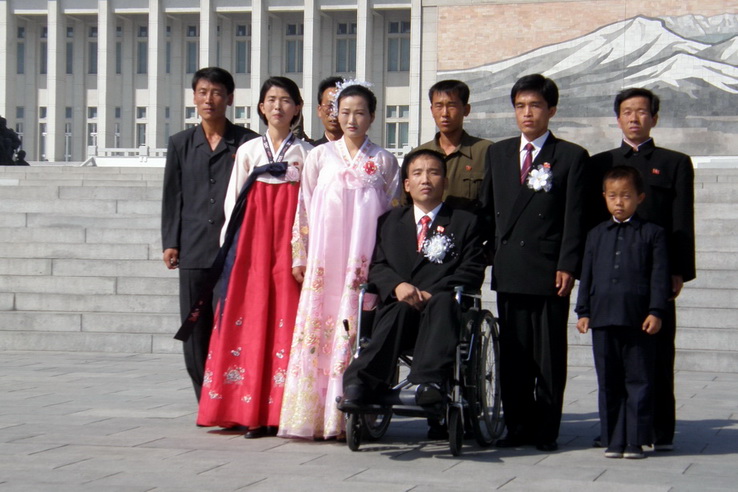
—
Rivalling the Grand Monument in significance is only the “Great Leader’s” final resting place, Kumsusan Memorial Palace, that nowadays holds the Kim Il Sung Mausoleum. Located in this gigantic former administrative palace
in front of a dazzling plaza the mausoleum can only be accessed on two days of the week. For that occasion thousands of Koreans, many arriving from afar, dress up in their very best garments and uniforms and put up with long waits and cumbersome
procedures to get a glimpse at the carefully preserved remains of their beloved leader. Men are generally required to at least wear a shirt and a tie, and so am I.
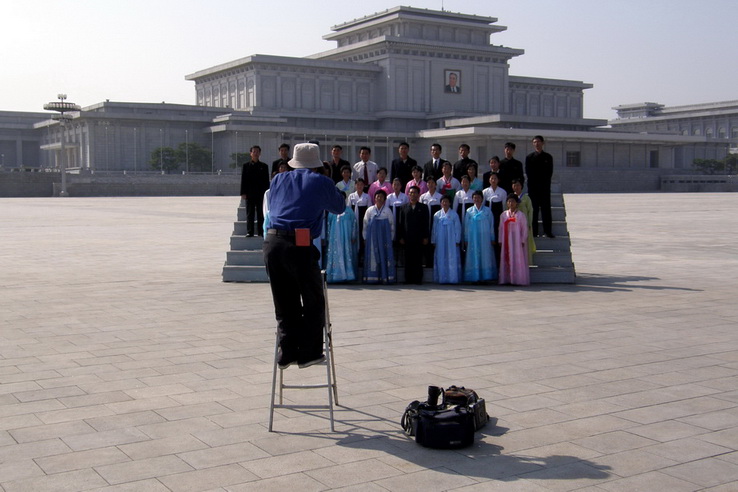
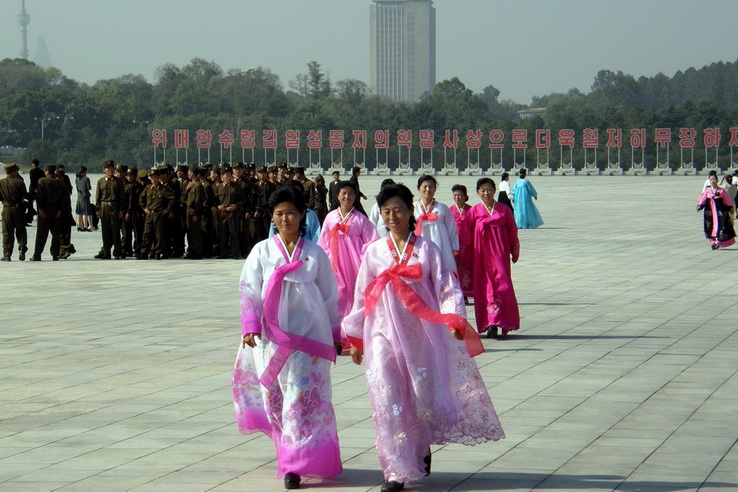
Upon entering the complex I am required to give up my camera, empty my pockets, walk through a metal detector, and disinfect my shoes by wiping them on a chemically treated floor carpet. Finally progressing seemingly endless moving walkways transport
me through polished marble corridors until I reach the main rallying point ahead of the access to the structure’s core.
Single file we are led into the complex, walking through vast, cavernous halls with floors so shiny clean that you could dine from them. The interiors are lavish. An overbearing portrait of Kim Il Sung adorns one of the first spaces we enter,
with walls featuring elaborate larger-than-life bronze reliefs of weeping soldiers, women, and children mourning the death of their irreplaceable leader. At this point small MP3 players are handed out, playing melancholic music overlaid by a British
accented narrative praising the glorious feats of the great man that he was without any qualification.
In line with three other visitors I follow the prescribed ritual and approach the large white, brightly illuminated statue of Kim Il Sung soaring in front of a colorful mosaic at the end of yet another spacious hall, and acknowledge his grandeur
with a solitary nod of my head.
Finally an elevator takes me to an upper floor where the actual mausoleum is located. Before entering everyone is required to walk through a short tunnel equipped from top to bottom with strong fans, purposefully installed to blow any sand
or dust off the visitor might otherwise bring into this sacred space. Silently weeping women dressed in flowing colorful dresses scurry past me, consoling each other with softly whispered words in an attempt to dry their tears.
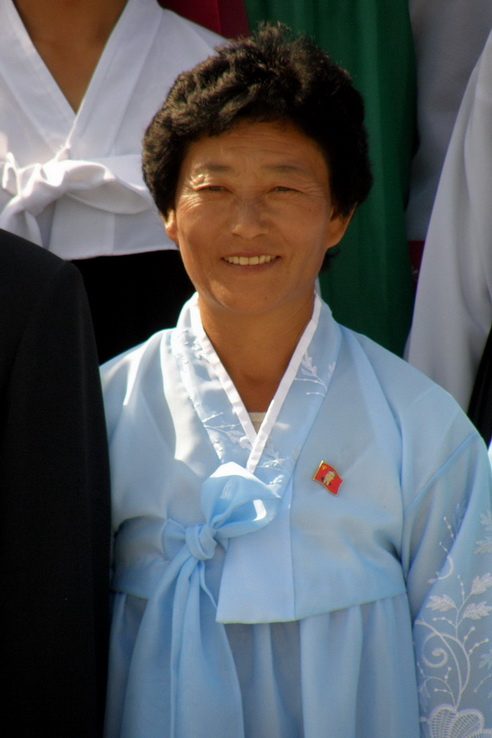
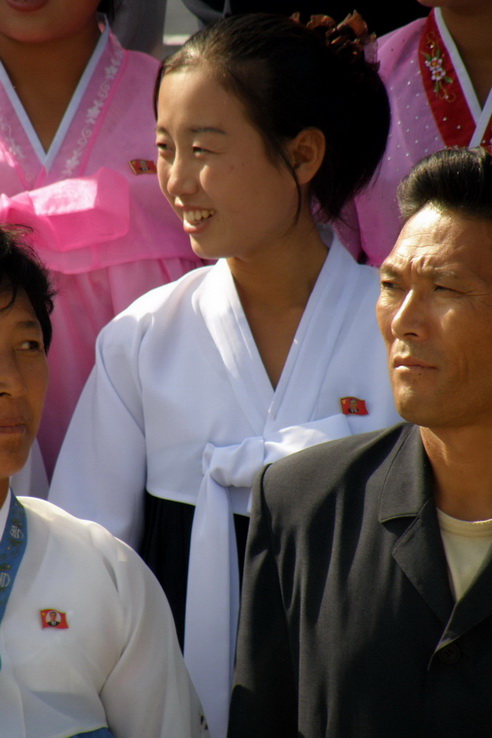
The body of Kim Il Sung lies in state in the very center of a spacious cuboid, watched over by guards of honor armed with silver-plated Kalashnikovs standing in all four corners. The atmosphere is gloomy, with a faint crimson light emanating from the
high ceiling, and air conditioning providing for a chilly climate.
Utmost decorum is required at this point. Again I follow the protocol and approach the casket in a line of four, bowing before it, and then walking clockwise around it. Another bow on his left side as well as on his right side later I slowly
walk out again through the gate to the adjoining room that features an exhibition of countless memorabilia, prizes, and decorations bestowed upon the man I have just seen rest in his lifeless state. Poster-large photos of Kim Il Sung with Castro,
Gaddaffi, Bokassa, and Ceausescu adorn the walls, while numerous showcases display honorary citizenships and keys to cities from all around the world, mostly awarded by less than officially representative dignitaries of their nations, as I am
explained by our British guide. Finally one gets a glimpse at Kim Il Sung’s train and the V12 Mercedes he used as his state limousine in the years before his sudden death.
—
As if a visit to this bizarre location hadn’t been enough for the day, the by far most impressive and mind-boggling attraction of my whole journey was still ahead of me. Almost every year, Pyongyang is host to what has been rightly
called the most incredible show on earth, the Arirang Mass Dance and Gymnastic Performance. This evening I was going to witness it with my own eyes. Staged in the city’s gigantic May Day Stadium with its seating capacity of 150,000, an
approximate 80,000 people are involved in presenting the audience with an audio visual onslaught of a show unlike any other on this planet.
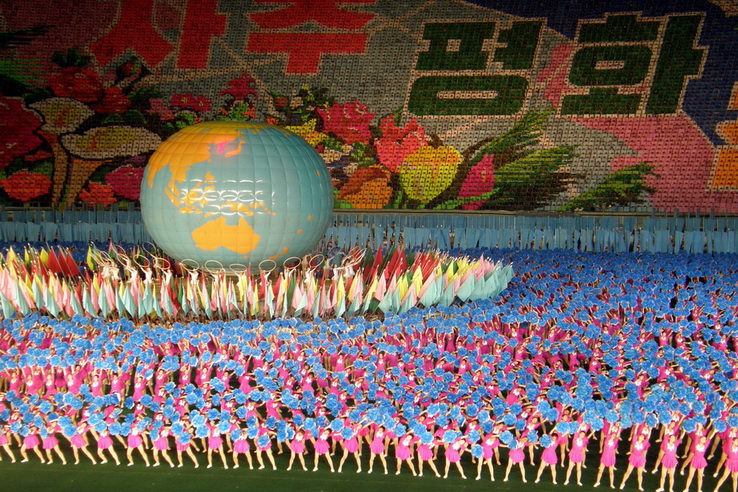
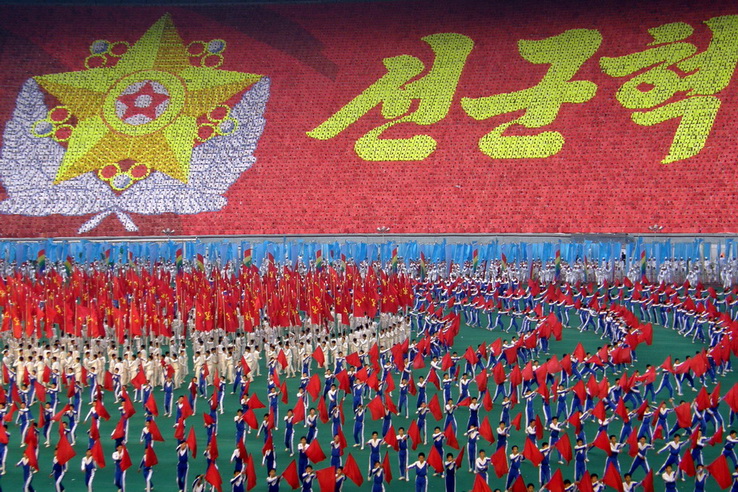
Thousands upon thousands of artists, gymnasts, acrobats, martial artists, and children on stage, performing incredible feats of showmanship perfectly in sync with each other and the music. In the backdrop, on the far ranks opposing the spectators, another
20,000 school kids equipped with colored boards that are raised and flipped to form gigantic animated murals depict scenes corresponding to the themes presented on the main showfloor. They range from how cute children are, the success of cooperative
farming, the unparalleled bravery of the nation’s invincible soldiers, to beautiful landscapes, flowers, and the strong desire for reunification of the country, the timing of the transitions always being incredibly fluent and perfectly
concise.
Arirang tells the compact story of the DPRK in dance, folk songs, and giddying acrobatics. The show is practiced for months and performed in front of millions, making it a truly national event. The greater significance of the show is about
teaching the collective, and the discipline and surrender to it that the governance requires.
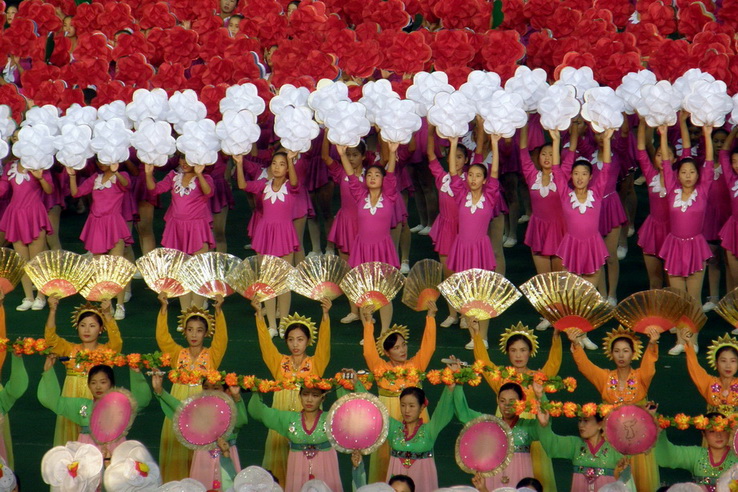
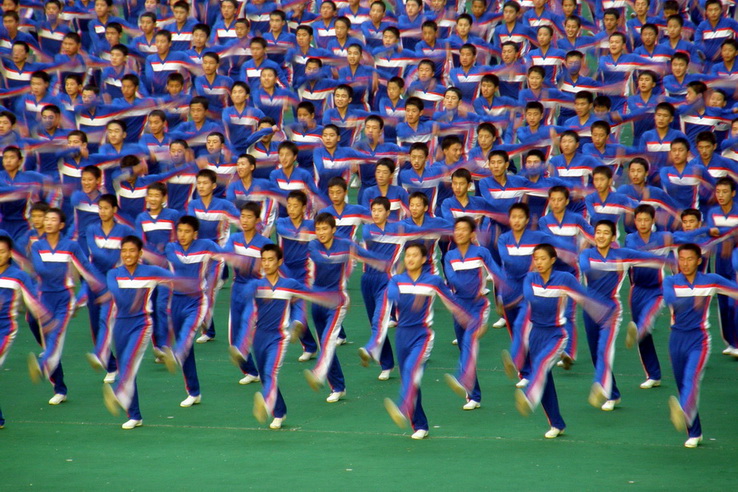
Needless to mention the performance just blew me away.
—
Yet another destination I consider very worthwhile is Pyongyang’s centrally located fun fair. It’s one of several in the city. There are a number of old-fashioned merry-go-rounds that look as if they have just arrived to the
city on temporary lease from Pripyat, the abandoned city in the zone of alienation near Chernobyl. There is a Ferris wheel and even a roller coaster, all somewhat rusty and decrepit, but still functional. Below the tracks of the roller coaster
someone has started growing field crops, mostly salad from the look if it. It’s a great spot to interact with locals, many of who are only too willing to smile and pose for photos.
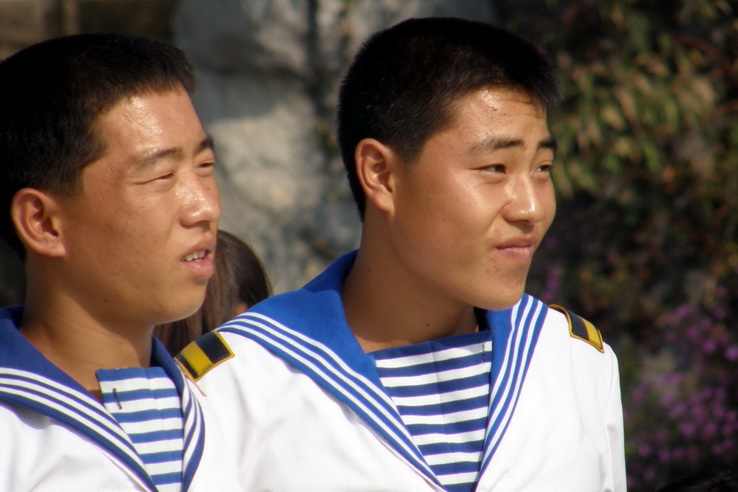
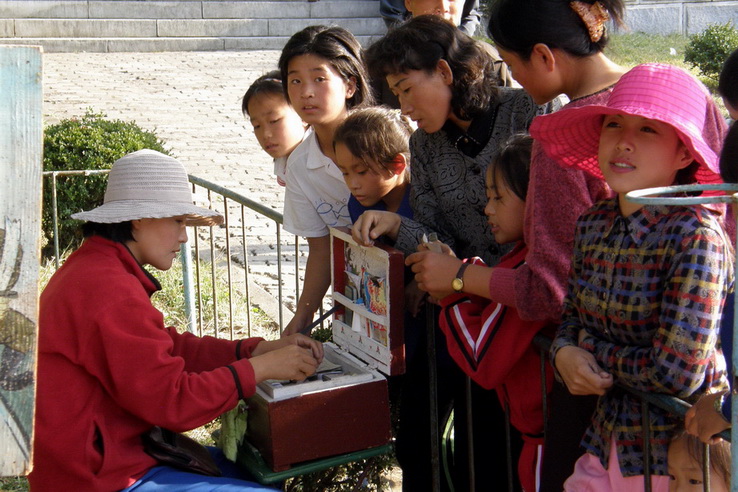
Somewhat disturbing, but at the same time curiously original, are the many makeshift shooting galleries that seem to be especially popular with younger boys and teenagers. There’s a throw-grenades-at-the-Americans booth, depicting US soldiers with
holes in their chests which have to be hit with wooden projectiles in order to score. Printed in bold letters below the boards is: “Let’s annihilate the American imperialists!” The official DPRK demonizes the United States
as the ultimate threat to its social system through state-funded propaganda just as much as through persistent stereotyping.
Similar target practise games require the contestants to hurl darts at caricatures of Japanese soldiers painted on wooden boards. Japan still is the great unforgiving for its colonial rule of Korea.
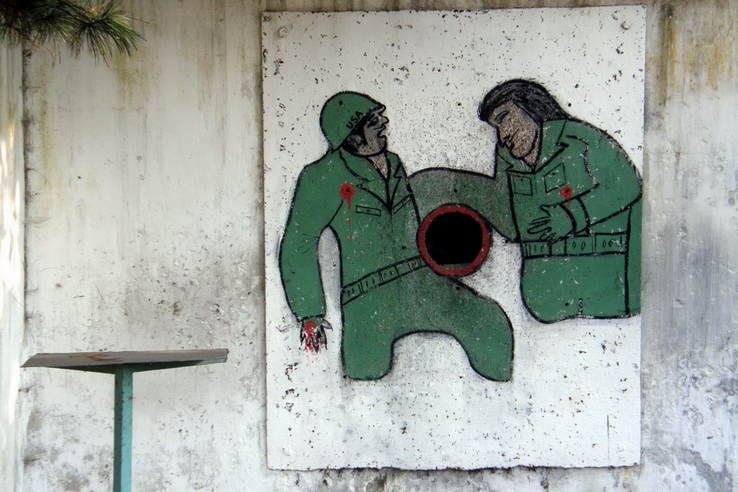
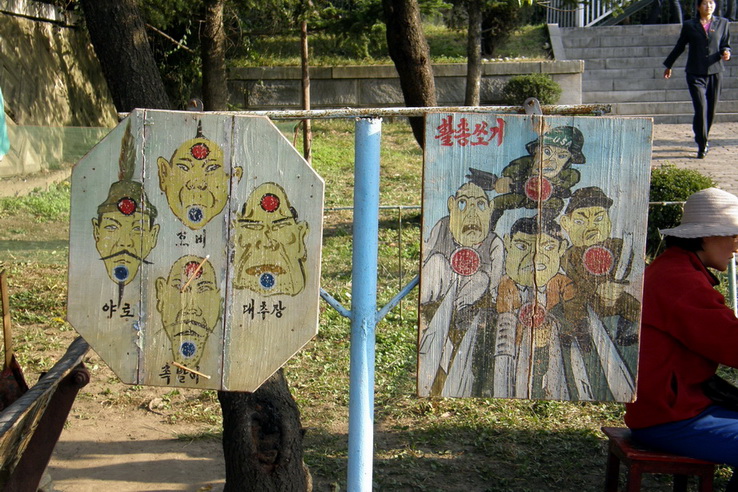
—
Altogether I get to spend three very busy days in Pyongyang. Aside from those highlighted in the paragraphs above I also get to see significant number of other sights and monuments, most in one way or the other testimony to the proud history
of nation, people, and leaders.
We visit the “Victorious Fatherland Liberation War Museum”, a huge structure with halls of compellingly arranged documents and artefacts from the Korean War, as well as an impressive collection of military equipment of both
Korean and UNC (United Nations Command) origin.
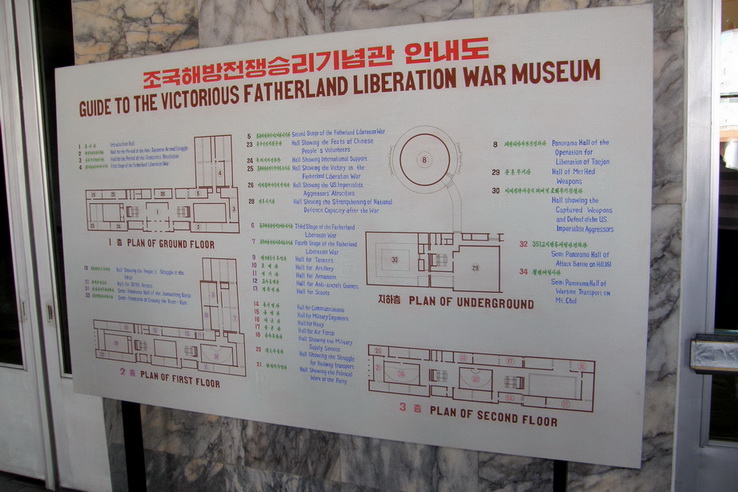
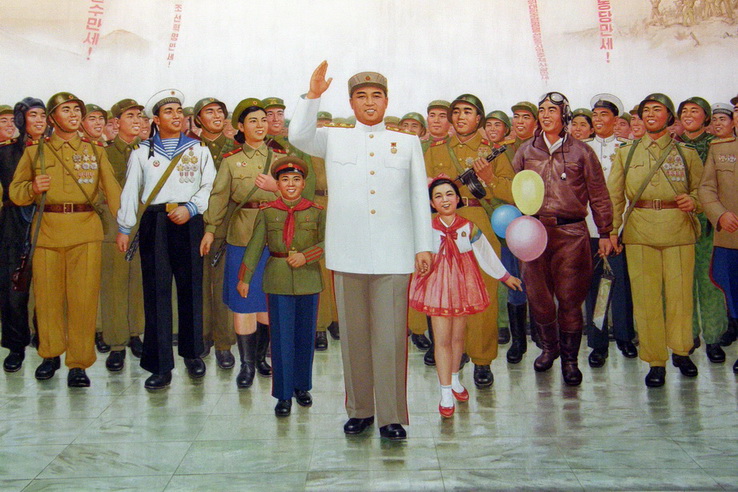
We go aboard the USS Pueblo, an 850-tonne US navy vessel that was caught by the North Koreans in disputably the DPRK’s territorial waters and consequently kept as a trophy of war and living proof of the treachery of the United States.
We take the elevator to the top of the 150 meter high stone-clad Juche Tower that dominates the eastern bank of the Taedong River with its 20 meter, 45-tonne metal flame flickering atop it. Built to celebrate Kim Il Sung’s Juche Philosophy,
Marxism infused with Korean nationalism based on self-reliance, the number of stone slabs used equals the days the leader was alive by his 70th birthday. At night, just as many other monuments, statues, and murals dedicated to either one of the
leaders, it is illuminated brightly, even if the rest of city has long gone dark due to one of the frequent power cuts.
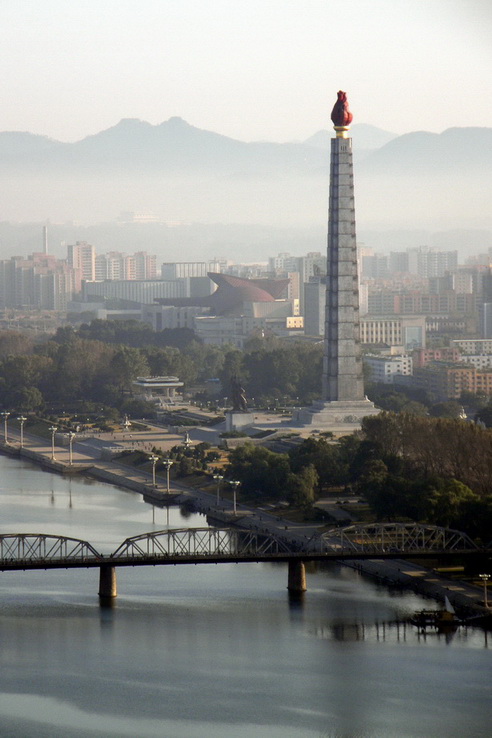
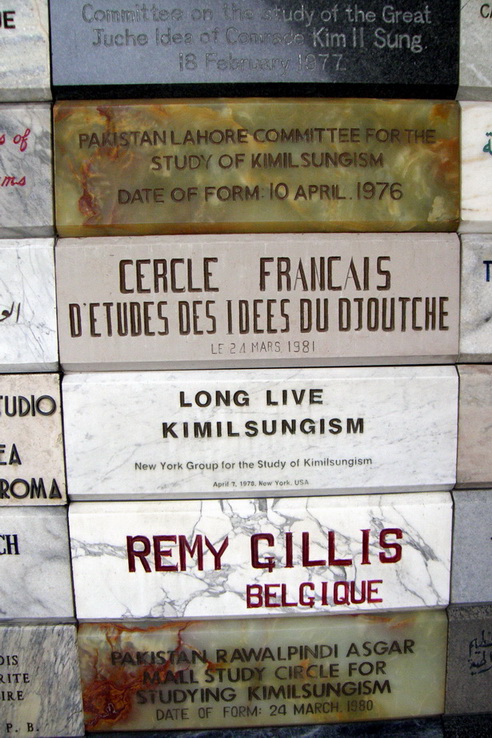
Eventually we leave the city behind, and the bus speeds on the several lane-wide, yet completely empty highway, in direction south towards the DMZ, the De-Militarized Zone. Occasionally there are people walking on the side of the road, some are riding
bicycles. Cars or other motorized vehicles we only see very few during the two hour journey.
The lowlands are covered with vast paddy fields that roll floor-flat to hillsides covered with maize. Neat, one-storey groups of brick houses with traditional roofs stand amidst. There’s hardly any sign of mechanization in the fields.
All work seems to be done manually.
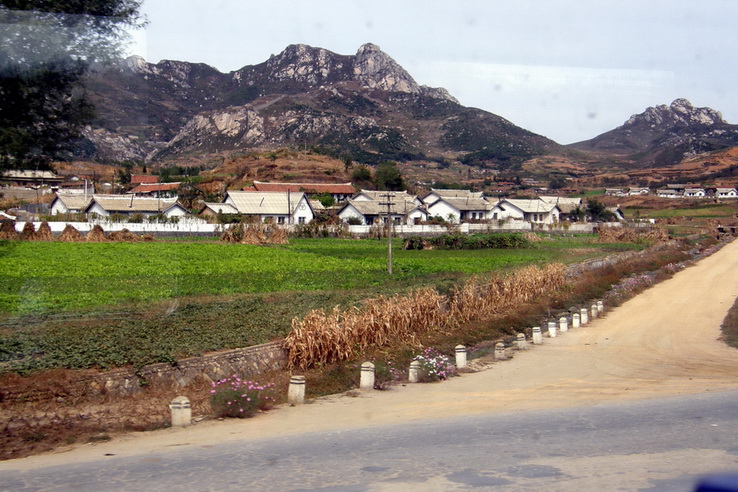
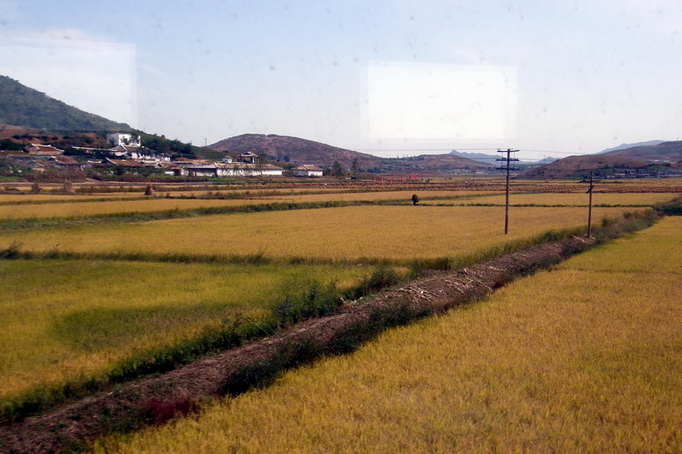
Arriving at the DMZ, the most heavily guarded and mined border in the world, we are greeted by a North Korean officer who goes about explaining his expectedly very lopsided understanding of the causes for the Korean War, the country’s resulting
division, and the DPRK’s standing in the conflict.
We are given a tour of the area where eventually the armistice agreement was signed between the UNC and North Korea, and are finally led to Panmunjom, the joint security area located right at the demarcation line. It is the place where almost
all negotiations since 1953 have been held. It is also the only place where North and South directly connect.
Technically it is possible to stroll from the North to the South, if it wasn’t for the many heavily armed soldiers watchfully standing guard to prevent anyone foolish enough to give it a try from succeeding. They are ordered to shoot
anyone who attempts to defect before they reach the line.
Despite the palpable tension the overall atmosphere is surprisingly relaxed. On the other side everything is quiet, with no tourists or any of the famously constipated-looking South Korean soldiers anywhere in sight.
Standing here I remember just having visited there a few months earlier, looking over to the DPRK with the excited anticipation of knowing that it wouldn’t be much longer until I’d approach this area from the other side.
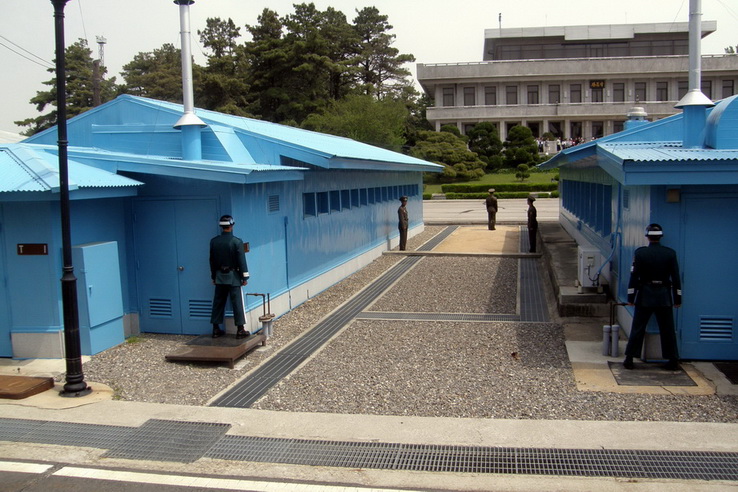
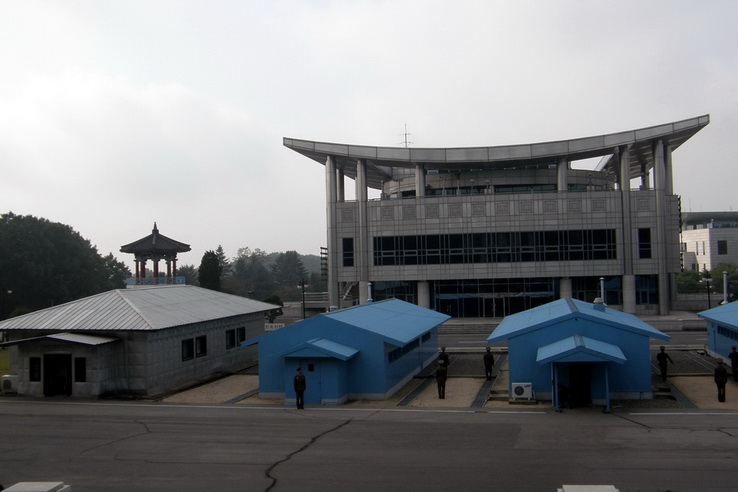
—
The following morning it’s time to start the journey back to China, this time by train. After a long nine hours traversing mostly dull countryside the train finally pulls into Sinuijiu’s railway station, the final stop before
leaving the country. Here the immigration and customs ordeal begins. Everyone’s got to get off the train and line up in front of the carriages. One by one the names of the passengers are called out who hence have to step forward and report
to the official before they may get back on the train.
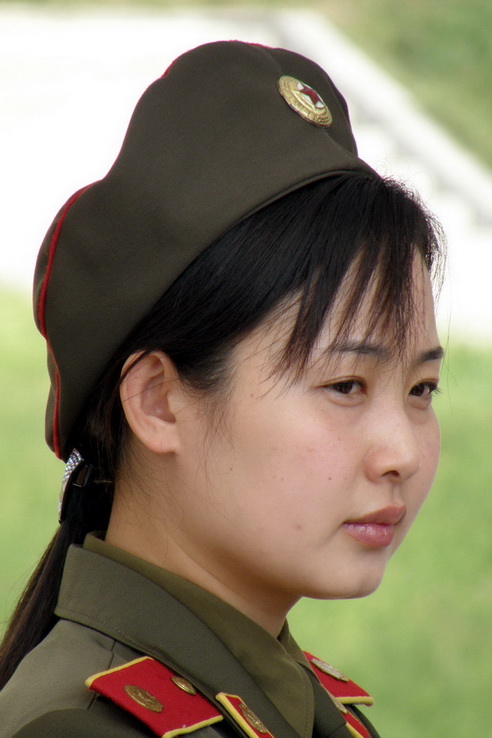
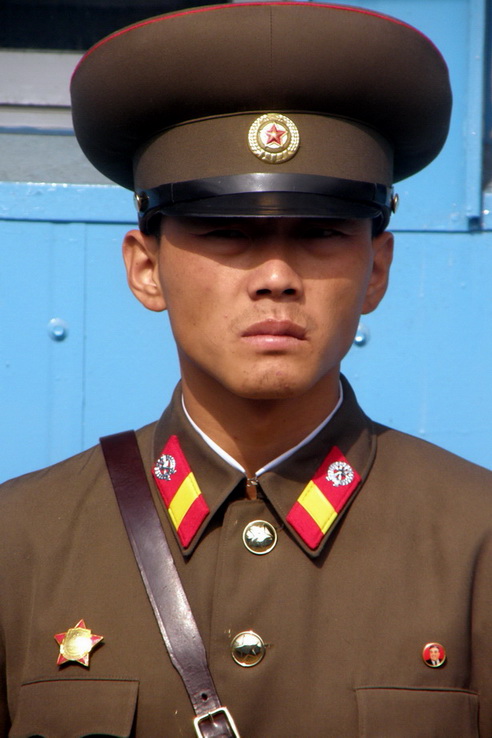
A couple of hours later, already thinking that the most tedious part has reached a conclusion, a delegation of stern customs officers enters the rail car and systematically start searching people’s luggage. A short and round, particularly mean
looking woman, whose facial features immediately remind me of a toad, storms ahead armed with a metal detector and determinately starts asking people for their cameras. Fiercely focused on the screens she proficiently goes about deleting any image
she finds inappropriate, causing every passenger yet out of her line of sight to nervously start hiding their memory cards. A German fellow later reports that, amongst many others, she took a particular dislike to snapshots showing rusty handrails
at Pyongyang’s funfair. Clearly, there is no rust in North Korea. After twenty minutes of indiscriminatingly deleting people’s photos she fortunately gets tired of this routine and disappears as quickly as she had arrived. Everyone
sighs with relief, agreeing she would make the perfect villain in any 007 movie.
The train abruptly jolts into motion again and slowly trundles over the Sino-Korean Friendship Bridge that straddles the River Yalu, the natural border between the DPRK and China. Of the two bridges beginning from Dandong, the Chinese border
city, only this one bridge makes it all the way across. Of the old Yalu Bridge that was bombed by the US Airforce during the Korean War, a stone’s hurl south of the functional rail bridge, only massive bridge stumps protrude from the waters.
Leaving North Korea behind me I watch Dandong’s commercial towers reflect sunlight onto Sinuiju’s low houses, dilapidated funfair, and smokeless chimneystacks.
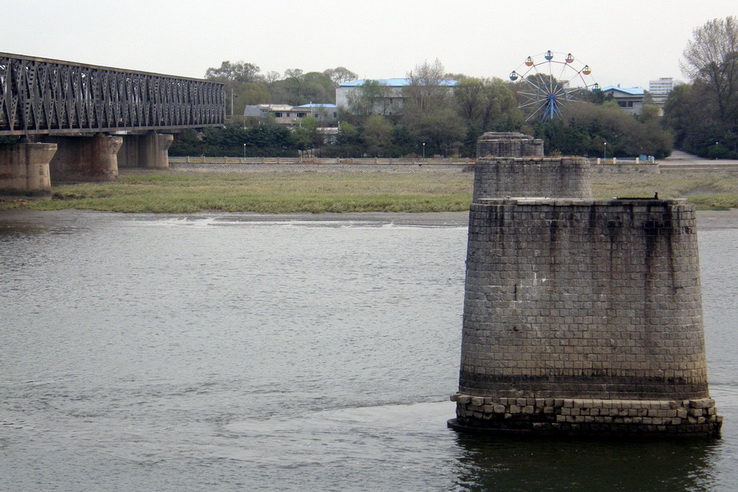
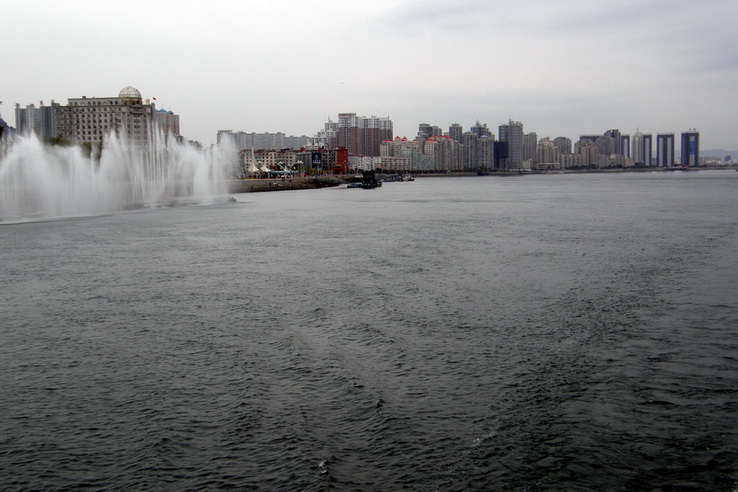
I once more reflect on the impressions of my time in the DPRK, this strictly controlled and stubbornly proud, yet also absolutely intriguing nation that has given me the feeling of temporarily leaving this planet and entering a parallel universe, in so
many ways totally different from anything I had ever seen or experienced before. What drove me was my insatiable curiosity to poke my nose into unusual spots, and the instinct to see something different in a world that keeps shaving the edges
off its differences and variations. I wanted to flash a bit of torchlight into a corner of the world, and with regard to that my journey has without a doubt been a complete success.
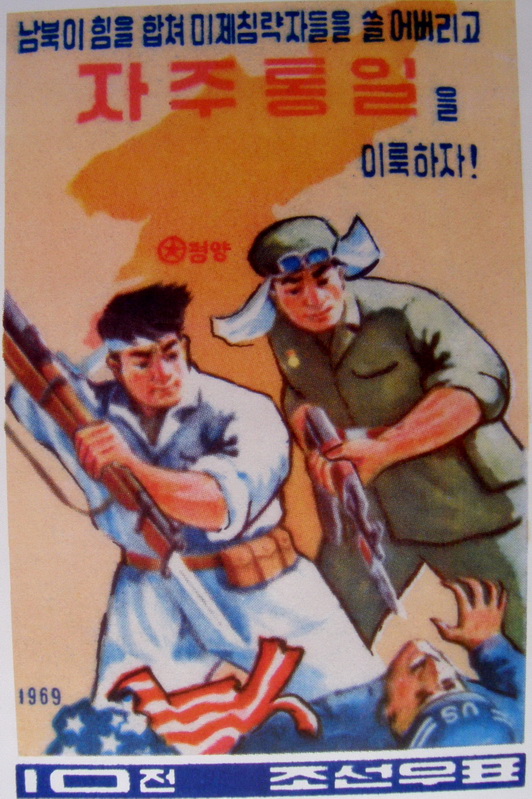
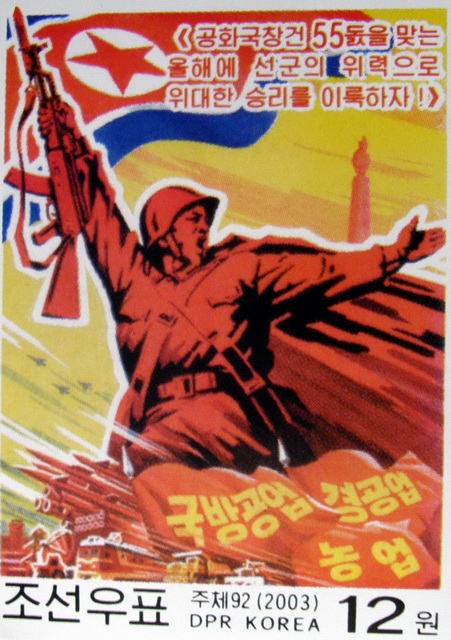
As expected, apart from hotel and shop staff as well as the Korean tour guides, interaction with locals was sparse, and where it existed often limited to smiles and gestures. Nonetheless the feeling that has prevailed is that they’re basically
just ordinary people who happen to have radically different ideas about the world. Perhaps unsurprisingly so, considering that they have traditionally been a people wary of foreign influence, and have now for so many decades already been almost
entirely cut off from, and out of touch with, the rest of the world. It should also not go unmentioned that to me the North Korean women are by and large the prettiest in all of northeast Asia.
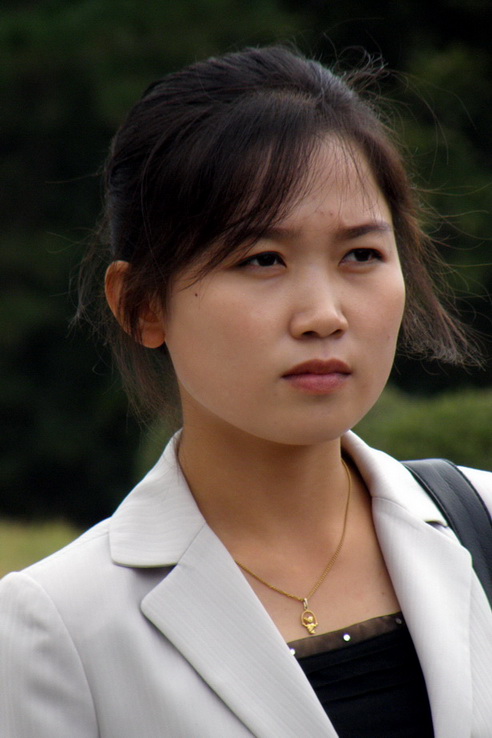
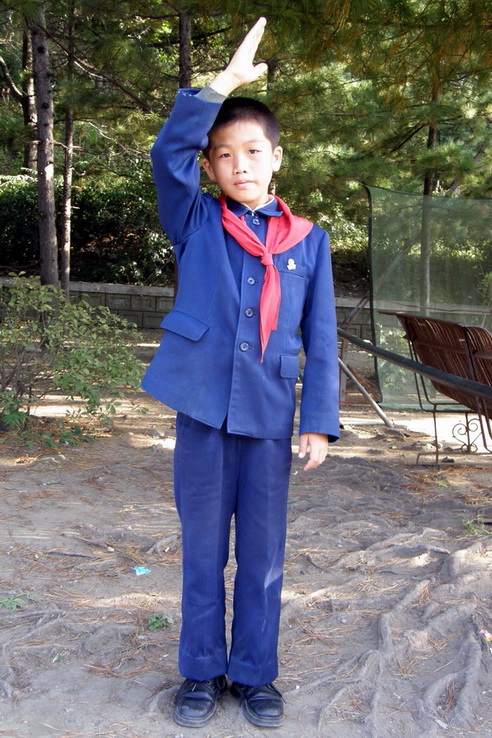
Travelling to North Korea, a totalitarian state that has adopted all-encompassing secrecy as one of its main lines of defence, has confirmed some rumors and debunked other myths, and I feel privileged to have been one of the estimated 2000 Westerners
who make it into the country every year. Perhaps only people who have been fortunate enough to have travelled widely can understand the appeal of a destination as superficially tense and joyless as this. For this reason it is evident that when
I return home most people won’t be able to easily relate to what I have seen, just like it sadly has been the case with many other, in comparison far less outlandish destinations. They don’t know, they don’t understand, and
regrettably many don’t even care.
Stickman's thoughts:
A trip report of the absolute highest story.
So I guess you never did make it down into the massage parlour in the hotel's basement…



